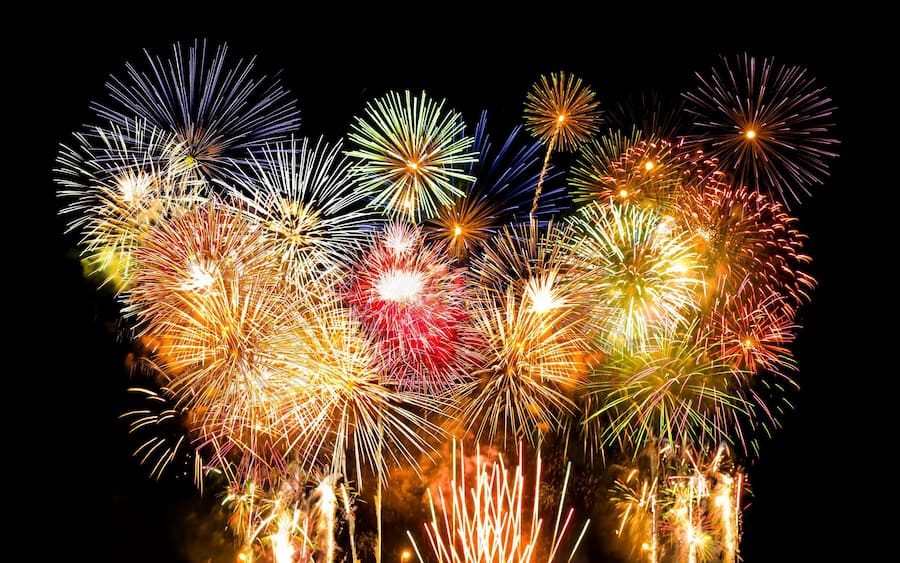
Fireworks, those brilliant, fleeting spectacles of light and sound, have captivated audiences for centuries. From grand national celebrations to local festivals, barrage fireworks are a dazzling way to mark special occasions. The art of capturing the beauty of fireworks, ensures your memories of these spectacular displays are as vivid and breathtaking as the events themselves.
Understanding Fireworks Photography
Before diving into the technicalities, it’s essential to understand what makes fireworks photography unique. Unlike standard photography, capturing fireworks requires a blend of timing, patience, and a bit of luck. The unpredictable nature of fireworks, combined with their intense brightness and rapid movement, presents a delightful challenge for photographers.
Gear Essentials
Camera:
A DSLR or a mirrorless camera is ideal for photography of fireworks. These cameras offer manual settings, which are crucial for capturing fireworks effectively.
Tripod:
Stability is key. A sturdy tripod will prevent camera shake and ensure sharp images.
Remote Shutter Release:
This lets you take photos without touching the camera, reducing the risk of a camera shake.
Lenses:
A versatile zoom lens is often recommended. It will enable framing flexibility, which is vital as fireworks can fill the sky unexpectedly.
Camera Settings for Perfect Shots
Manual Mode:
This mode gives you complete control over the exposure settings.
ISO:
Keep it low, around 100-200, to avoid noise in your images.
Aperture:
A mid-range aperture, like f/8 to f/11, often works well. It offers enough depth of field to keep the firework sharp.
Shutter Speed:
Long exposures are key. Start with 2-4 seconds and adjust as needed. Bulb mode can also be useful, allowing you to hold the shutter open manually during the firework burst.
Composition and Framing
Finding the right spot is crucial. Arrive early to secure a good location. Consider the foreground and background elements; they can add context and interest to your fireworks photos. Also, leave enough space in your frame for the fireworks to explode. Remember, you can always trim the image later for a tighter composition.
Focusing Tips
Focusing can be tricky in the dark. Set your focus during daylight and switch to a manual guide to lock it in. If you’re focusing at night, use a distant light source or the first few to set your focus.
Experiment with Creativity
Once you’ve got the basics down, experiment with creative techniques:
Silhouettes:
Include people or objects in the foreground to create shapes against the bright fireworks.
Long Exposures:
Play with longer shutter speeds to capture light trails and stunning patterns.
Multiple Exposures:
Some cameras offer a multiple exposure feature, allowing you to combine several bursts into one image.
Post-Processing Magic
Even the best shots can benefit from a bit of post-processing:
Adjusting Brightness and Contrast:
Enhance the vibrancy of the fireworks.
Cropping:
Improve the composition if needed.
Noise Reduction:
Clean up any digital noise resulting from long exposures.
Safety and Etiquette
Remember to respect safety guidelines and local laws regarding fireworks photography. Be considerate of others around you, especially in crowded places.
Understanding the Types of Fireworks
Identifying Firework Types:
Different fireworks create different patterns. Some burst into circular shapes, others in willow or palm tree-like patterns. Recognizing these types can help you anticipate the kind of shot you’ll be taking.
Timing for Specific Bursts:
Certain fireworks, like the slow-burning gold willows, require longer exposure than quick, sharp peonies.

Advanced Camera Techniques
Using Manual Focus for Clarity:
Auto-focus can struggle in the dark and may not be reliable for fireworks. Switching to manual focus gives you more control.
Bracketing for Exposure Variety:
This technique involves taking several shots of the same burst at different exposure levels. It’s a great way to ensure you capture at least one perfectly exposed image.
Creative Angles and Perspectives
Elevated Positions:
Shooting from a hill or a high building can provide a unique perspective, especially if you can capture the crowd or landscape below.
Reflections:
If you’re near water, catch the fireworks review. This can double the impact of the shot and add symmetry.
Utilizing the Environment
Incorporating Landmarks:
Including a recognizable landmark can add a sense of place and scale, making your images more compelling.
Playing with Foreground Elements:
Trees, buildings, or people in the foreground can add depth and context to your fireworks photographs.
Technical Tips
Reducing Noise in Camera:
Lowering the ISO is a start, but some cameras have built-in noise reduction features for long exposures.
Using a Lens Hood:
Even though it’s night, a lens hood can prevent flares from nearby lights or unexpected bright bursts.
Post-Processing Techniques
Enhancing Colors:
Slightly boost the saturation to make your fireworks colors pop.
Layering Images:
In post-processing software, you can layer different bursts to create a composite image of a spectacular fireworks finale.
Legal and Safety Considerations
Understanding Local Regulations:
Ensure you know any regulations about photographing public events, especially in crowded urban areas.
Being Mindful of Others:
Be considerate of your surroundings and ensure your photography setup doesn’t obstruct others’ views or enjoyment of the event.
Final Thoughts
Capturing fireworks is as much about planning and preparation as creativity and technical skills. You can transform a fleeting moment into a lasting memory by understanding the types of fireworks, mastering camera settings, creatively using your environment, and fine-tuning with post-processing.
It’s about blending art with the science of photography to freeze those spectacular, fleeting moments in time. Remember, each photograph you take is not just capturing light; it’s grabbing a celebration, an emotion, and a unique historical moment.
Also, read this: Terrestrial Laser Scanning: Revolutionizing Data Capture






